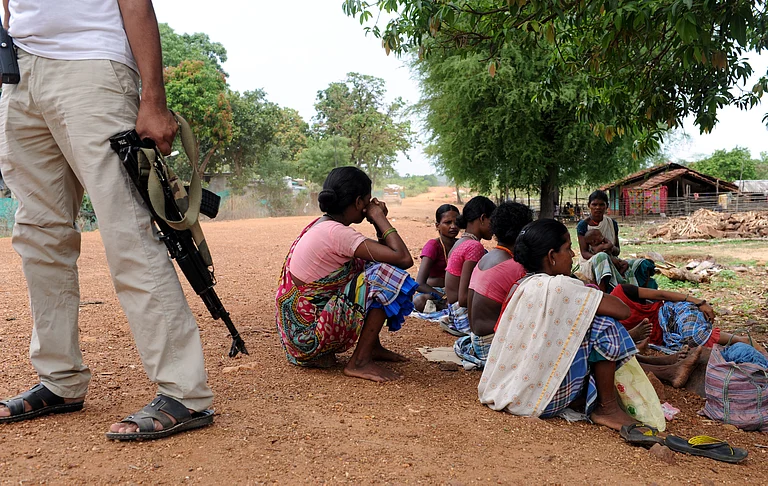लो जी,
हम भी आ गए
सलय सलय
हिसाब दो जवाब दो
हमारा घर क्यों उजाड़ा?
See, we too arrived,
slowly, slowly,
Give an account, answer me
Why did you ruin my home!
…………..
This poem by the tribal writer and poet Vandna Tete characterises the questions posed by the inhabitants of Chhattisgarh's Hasdeo Aranya to the government and the system, which is not being heard in the cacophony of ‘development’. The poem gives voice to the struggle against ruining the forest –the voice which is being suppressed by mining needs.
Vandna Tete has written multiple poems under the theme of "Jal, Jungle, and Zameen" (Land, water, forest)’ and their protectors. Speaking to Outlook, Tete emphasises that protecting the forests is just not about the protection of tribals or human beings, but it is about all things alive – the kind which our naked eyes cannot see, and the reason for all lives is forests.
She says that the destruction of Hasdeo forests is not just one example, wherever, there have been losses made to ‘jal, jungle, zameen’, the tribals are there to fight because they are not the owners, but the protectors. “And therefore, the spiritual and social trust of tribals is linked with forests.”
In the adivasi dominated areas of Korba, Surajpur and Surguja in Chhattisgarh, trees in the Hasdeo Aranya forests spanning 1.7 lakh hectares are being felled, which is seeing a country wide resistance. As per various reports, more than eight lakh trees are planned to be uprooted.
But the question remains, is the Hasdeo incident a one-off issue? Vandna Tete says that in every state, wherever adivasis are not in margins, trees are being felled with the nexus of corporations and governments. As per the media reports, in the last 15 years, more than 16,000 hectares of forest area have been used for non-forest use. As per another report, 1.85 crore trees have been felled in the last 10 years for road construction.
In the last 40 years, Odisha saw the most, 10,451 hectares, being transferred for mining use. Most of these areas come under Keonjhar district, and there are around 530 villages which are seeing man-animal conflict, especially with elephants.
Land Conflict Watch, a web based data research project that maps and analyses ongoing land conflicts in India, says that out of 35.58 lakh hectares of land in India, there are 753 land conflicts ongoing affecting 92.97 lakh people. Reports state that 30 per cent of these conflicts are of forest land.
Independent researcher Tusar Das, who works on various forest related laws, points out that apart from Hasdeo, protests are ongoing in Niyamgiri Hills in Odisha against Bauxite mining and in Maharashtra’s Gadchiroli district against iron ore mining in Surajgarh forest.
Das says: “A research report points out that more than 20 crore adivasis and other traditional forest dwellers basically have land rights in 1.77 lakh villages spanning 40 million hectares of forest areas under Forest Rights Act, 2006. Therefore, if FRA is implemented properly then at least 50 percent of the forest areas can be easily protected.”
However, Tushar adds that after the Central government’s amendment in the Forest Conservation Act, 2023 there may be possible violation of FRA and the rights vested upon the Gram Sabhas in land acquisition for various projects. “There are a lot of places like Hasdeo where the fear among the tribals have increased compared to the past,” adds Das.
According to one report, after the Forest (Conservation) Act, 1980, till date–44 years–around 10.26 lakh hectares of forest have vanished.
Vandna Tete says that adivasis never hesitate or worry that they will win or lose, and till the time there will be a corporate-political nexus for profit making, adivasis will continue their struggle.
Adivasis are often touted as the true nature lovers, and it is said that they deeply attached the forest and its inhabitants. In India, Adivasis are the only community whose lineage is named on living organisms. Like, the Kachhap title from the hindi word of Tortoise ( Kachhua); Khes from paddy (dhaan); Lakra from Tiger(Bagh); Minz from Fish (Machli); Xaxa from Crow (Kauua); and Toppo which is named after a special bird.



























